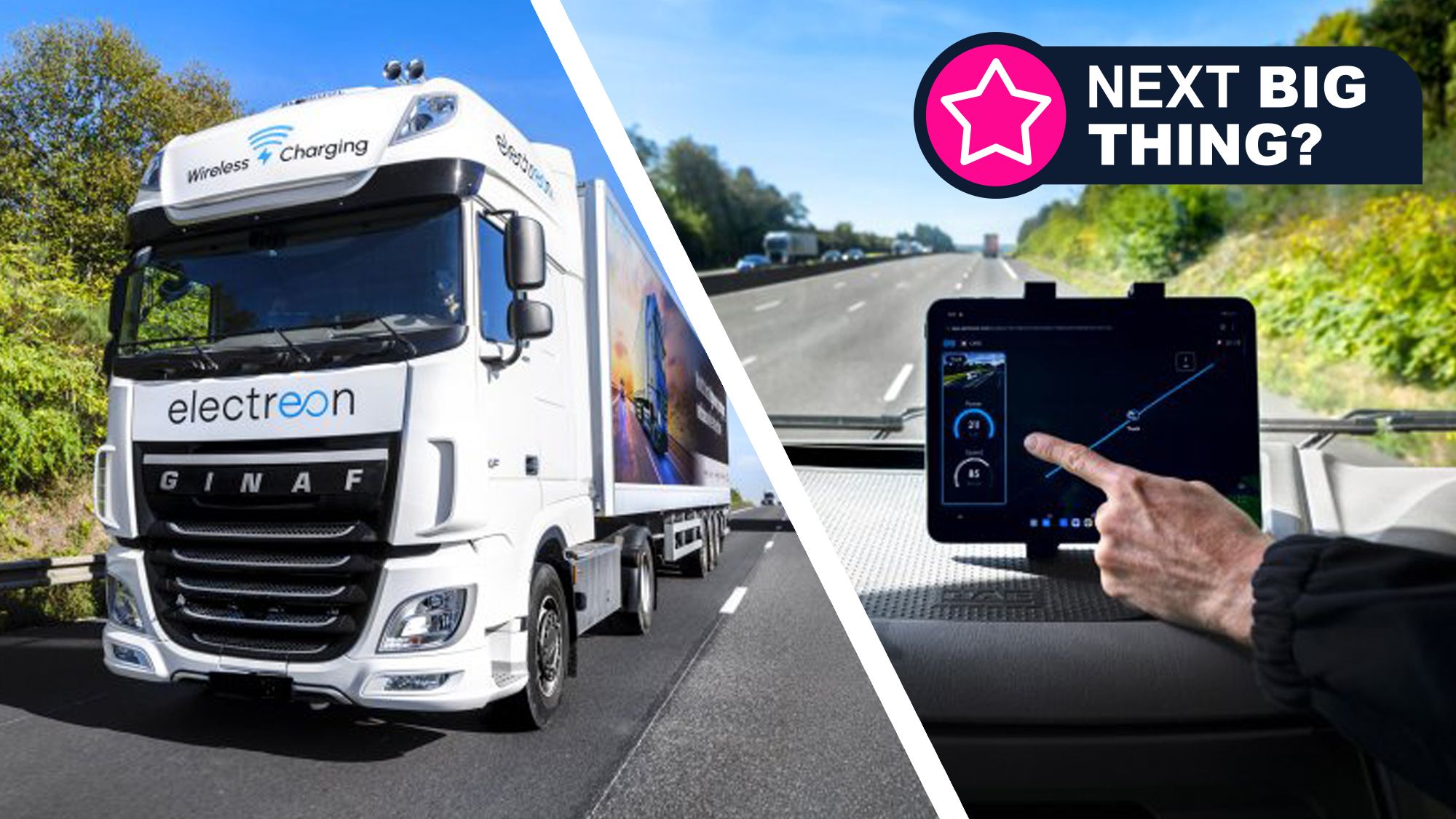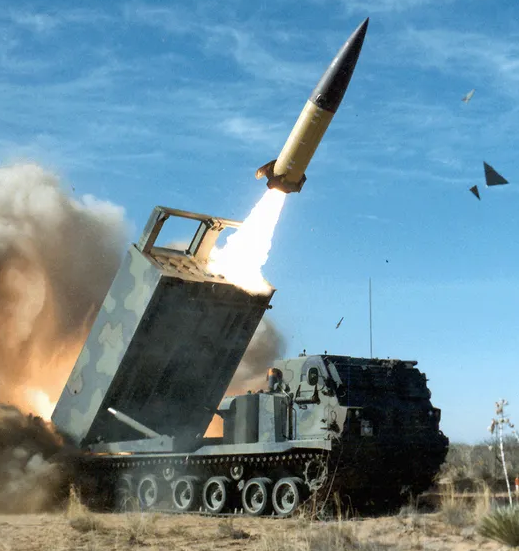EU driving time regulation requires a 45min break every 4.5h of driving. Maximum permitted road speed is 100km/h. So what you really need is 450km of realistic range so probably more like 500-600km range as stated by the manufacturer and fast chargers on all highway stops, which are able to charge up the trucks. Those kinds of trucks and at least some chargers are around in Europe already. Just a matter of deploying them.
Those trucks are also a very good choice, if you want to drive to and from a large freight rail yard or port.
Making charging stations for trucks is not feasible as of today, I think. Judging by how they park in Autobahn pockets, they would need a designated parking lot just for these trucks where each spot has a charger. These parking spots would be huge. As huge as some major on-road gas stations. We maybe could add infrastructure to these existing gas stations. All the small ones needs to be extended. And the ones that are just for parking - have do be rebuilt entirely.
It seems that this is a whole a lot of work. But is it as much as building wireless charging road? I feel that trucks will never go electric in near future.
I’d like to know how long the lifecycles of those charging stations are. Because you are right that Maximum speed and break times put a hard cap on distance needed, but at least some form of self driving will eventually come and i’d imagine long distance highway trucking would be the prime target for deployment.
Wireless charging wastes a ton of power. Roads also get beat to hell.
I really don’t see this being practical.
So an overhead wire would be better right? Then we could attach multiple trailers together, that would be neat !
Let’s replace the road with something more durable! Iron should do the trick. Also if everything is attached, only 1 person really needs to drive! That would free up a lot of people’s time.
That’d be so neat!
busses are just mobile train cars change my mind
could even make the electric truck road separate from the normal road, for safety.
Well, Germany was already testing this. And having it seen live personally on a vacation (we happened to take that road where this was tested by chance) - it just looked like a shitty version of a train…

These strike me as a much better plan than in-road wireless.
Though, I wonder what the durability of these are compared to the same you see in cities for trams. Big difference for those is the speed. Would they get worn away too fast? Can they economically make the cables extra thick/hard to compensate?
I mean regular trains do use them all the time and those can go like 80-320 km/h (or even faster in other countries) where as truck only go like 80-100 km/h in Germany.
I’m more concerned how much the amount of trucks wears them down compared to trains. You need many more trucks than trains for the same amount of goods and also trucks have a much higher frequency.
Less batteries, lighter vehicles. Makes a lot of sense. And while roads get beat to hell, I assume it doesn’t affect it that much.
Now make it charge all the time, but remove the battery to make it lighter and not need to charge but drive directly from network energy. Then put it on rails so it doesn’t crash and is more efficient. Then make it longer. Like hundreds of meters long.
You’ll want small capacity batteries for in town and integrate this into major highways and some city roads in larger towns, but yes you could greatly reduce battery sizes
I think you missed the train on that one
Ironically I was reading this while transferring trains and missed it lol
No problem, the next one is in a few minutes
Oh no I caught the train, just missed the train posting
200kW of average power delivered under optimal “steady-state” conditions.
No further explanation was given, so I can only assume this means the tester was sitting still, carefully aligned over the charger on this “road”
Crazy idea, but what if we were to use a wire? Like such that it doesn’t have any sort of contact with anything else. Then how about we, like, couple more of them together, meaning less congestion and less traffic jamming? Okay, and this is the least feasible part of my proposal, I know, but then What if we make it go on steel? So the wheel is steel and the floor, the wheel rests on, is steel as well. But because of the optimised friction, we can now make the contact surface super small. I think these improvements could really bring a massive benefit to the transportation industry.
No sarcasm though: Why do goods get delivered over long distances by a lorry? It doesn’t make sense financially and from an economy of scale perspective. It asks for trouble. The infrastructure gets used up super quickly, thanks to them being absurdly heavy, compared to the surface and what it can withstand. Plus, because it may seem like all of these lorries are going the same way, no they absolutely aren’t, they come from a thousand different directions and go through a thousand different directions. They only go through the same bottleneck, aka the pinnacle of inefficiency. It is way easier to transfer it from goods terminal A in city A to goods terminal B in city B and everyone just goes to the goods terminal and picks it up from there. It’s faster, more reliable and does not clog up the infrastructure. It’s good for the businesses providing the service because easier service means more money, customers benefit from it as well naturally because they get the goods faster and more reliably, and the taxpayer benefits most of all. Since they do not need to subsidise a motorway that breaks within 10 years anyway. On the other hand, we have a few megacorporations that make good money selling cars, so I can answer myself, why trains are a thorn in the eye of some infrastructure ministries around the world.
I can answer on why they don’t use trains if you like. I know a professor in logistics. It’s because it’s cheaper to use lorries. Moving goods from the factory to the train, move it onto the train, transport it, then move it from the train to a lorry again and take it to the destination isn’t as efficient as we’d like
They used to have car trains though, and that I would love to have back. Imagine just driving onto a train car, leave it there and go into the normal train where you could eat, drink and sleep, and after a day or so wake up at your destination. I would stop flying, given that the price was competitive. Which it wouldn’t be sadly, but one can dream.
That’s interesting, but do you think, is it because lorries are so heavily subsidised compared to trains? Because think of, for example, the Brenner-based tunnel in the EU. When that thing is finished, it’s going to be one of the longest tunnels in the world. That thing would bring unprecedented transport capacity through the Alps. And while 8 billion € may sound much for a single building, said building is going to be used for 200 years.
I’m curious, do you still think that if lorries had to reimburse the actual cost of transport that it would still be competitive under these conditions?
That’s not for me to answer. I honestly don’t know. But from what I recall about our lorry/train discussion it’s the labour cost of switching transportation combined with the time it takes both to switch, but also trains rarely go directly to the destination you want. They tend to do stops, or detours. So there are conditions where trains absolutely would be the better/cheaper option, but they’re pretty rare, so setting up one transport process instead of two is usually better, even if a few transports could be done cheaper/better.
But also yes, we spend a lot more money on improving our roads than we do on improving our railway networks.
Also this should help: https://transport.ec.europa.eu/news-events/news/rail-transport-new-harmonised-eu-standards-support-cross-border-rail-2023-09-08_en
I mean, how dumb is this? “Too often, national rules still force trains to stop at borders, when driving from one EU country to another. […]stopping trains at internal EU borders, and having to change crews and locomotives that are not certified for the next network’s national requirements[…]”
Yeah, this is still a problem. It’s being fixed however. It’s going to take until 2040, plus minus. Thanks to the EU standardising the gauge, the platform height, the electrification system, and most importantly, the protection system, it’s all really coming together. But rolling all of this infrastructure out takes time. Europe always was a fractured continent. Then the EU came and made life better. Problem is, due to the car mania in the 70s and the privatisation mania in the 90s, railway was neglected. In Austria, there were even discussions of privatising the national railway operator. And look at what good that has done Britain. Luckily it didn’t go through and the public perception really has changed about that. On the side of technological innovations, there are now many locomotives which are certified for multiple countries, which have all the necessary bits and bops for their protection system to drive in other countries. And when 2040 rolls around, all of that additional baggage is going to be obsolete anyway, thanks to everything being harmonised to ETCS and (mostly) 25kV 50Hz. Then most of the problems will disappear. And that may sound expensive and cumbersome, but all of that infrastructure has a finite usage duration anyway. So 2040 because everyone is essentially replacing the old stuff on the fly with the new harmonised stuff. And from there on out, it’s really going to be smooth sailing, technology-wise anyway.
SolarWirelessFreaking
Roadways
Another comically pathetic attempt to compensate for cars’ ridiculous inefficiencies.
Germany has project like this but with overhang wires. It works but costs of electricity there suck donkey balls
sweden also ran one of those between 2013 and 2020. they found that it wasn’t cost-effective either, and at the time they discontinued the experiment i was paying €0.02/kWh. so i guess there are other problems than the electricity cost.
This isn’t comparable to that in any way IMHO.
Here in the US, we’re rolling back EV incentives, and slapping tariffs on everything to hamper production and innovation. It must be wonderful to live in the modern world.
wonderful to live in the modern world.
It’s pretty great.
I’m really surprised to learn more as an adult how everything is so shitty in America. Like everything between public transportation, trains, mobile call voice quality, difficulty getting around anywhere without a car, (lack of) public healthcare, lower power from the electrical outlets, awful availability of quality foods, lower construction standards, expensive education, corruption built into the political system by design, the list just goes on.
My ex wife wanted me to move to America (she kinda grew up there). I was like nah bruh. Not gonna happen. And that was during the Obama administration, even. Things were even kinda looking up, from our perspective. 💀
I see this take a lot and I think by now most people should realize that this isn’t really an issue of which president is in power. US has enough territory to basically fit some countries people compare it to into a single abandoned farm. Also individual states not only have economies that are bigger than most countries, but are also so wildly different from each other that pretty much the only thing they share is the USD. US does have trolleybuses, electric delivery cars and a fuckload of solar installations and charging stations in places where it makes sense. At the same time, running fiber in a place with population density of <1/km^2 or in a city where digging up the street costs millions in disruptions every hour is prohibitive.
🤷♂️ My country also has some places with population density of about 1/km², and they have fiber. The cost might be prohibitive because of how much they charge/are allowed to charge? I dunno.
Maybe fiber runs through that location? Digging is expensive no matter where you live. Adding a km of underground fiber seems very unlikely to hook up one person, but I’ll take your word for it.
The French future EV wireless transport system I’m more interested: https://www.lohr.fr/catalogue/draisy/










